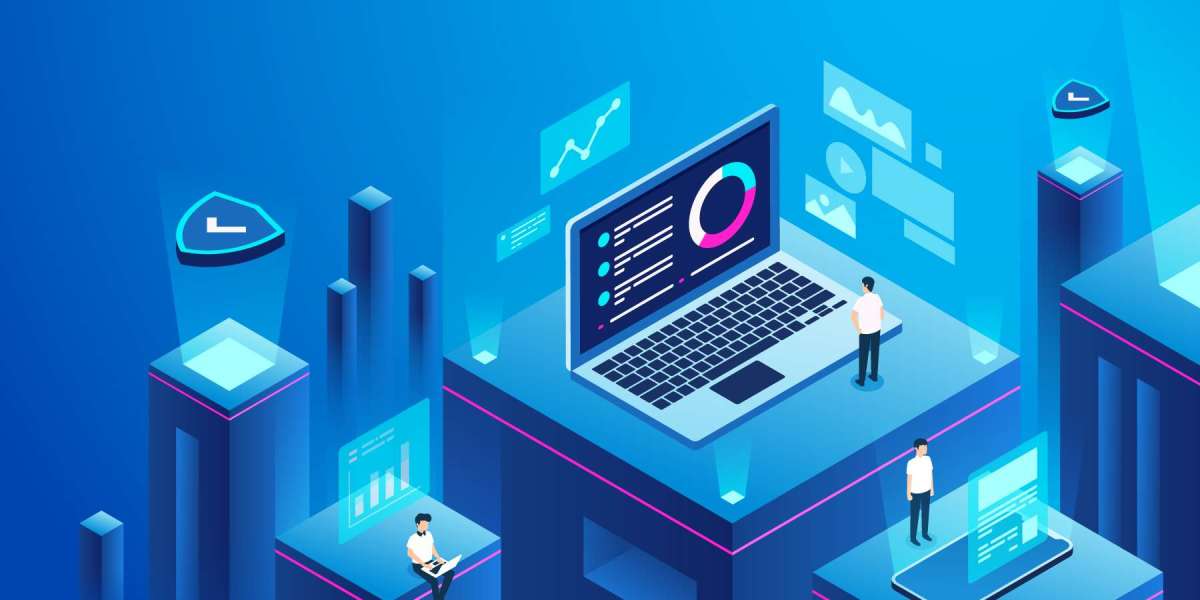Business-to-business (B2B) ecommerce is all about selling goods or services online from one business to another. Think wholesale distributors, manufacturers, or software providers that supply other companies. In today’s digital world, B2B ecommerce development involves building online platforms where businesses can explore catalogs, place orders, manage accounts, track shipments, and handle invoices—all using a clean, user-friendly digital experience.
This blog breaks down what B2B ecommerce is, why it matters, and how it helps organizations grow. We’ll keep things clear and practical—no jargon, just usable insight.
What Is B2B Ecommerce Development?
At its core, B2B ecommerce development is the process of creating an online storefront tailored specifically for business customers rather than individual shoppers. Unlike typical B2C (business-to-consumer) websites, B2B platforms handle unique needs such as:
- Custom Pricing & Catalogs – Businesses may see different prices or product offerings based on their contract, purchase volume, or sector.
- Bulk Ordering – Companies often need to order large quantities at once, requiring features to streamline that process.
- Multi-User Accounts – A single company might have multiple team members placing and managing orders with varying access levels and approval workflows.
- Payment Flexibility – Options like net payment terms, purchase orders (POs), and credit accounts are common in B2B settings.
- Integration with Internal Systems – B2B ecommerce stores often connect with ERP, CRM, inventory, shipping, and accounting systems to keep everything in sync.
- Detailed Reporting & Analytics – Administrators need visibility into buying patterns, spend history, and product performance to make informed decisions.
All these special features are why B2B ecommerce development is more involved than your average online shop—it’s about crafting a system that truly understands and supports how businesses buy and work together.
Why B2B Ecommerce Matters Now
The shift toward B2B ecommerce isn't just happening—it’s accelerating. Here's why:
1. Changing Expectations
Employees and buyers have become used to smooth, self-service experiences from B2C platforms like Amazon. Now they expect the same convenience and speed when purchasing products for their company.
2. Efficiency & Cost Savings
By automating manual processes like order placement, quote requests, and invoice approvals, businesses save time and reduce costly mistakes. No one has to dig through spreadsheets or file cabinets anymore.
3. Scalability & Reach
A digital storefront opens doors to new markets without needing physical branches. Whether it’s reaching global partners or niche suppliers, B2B ecommerce supports faster, broader growth.
4. 24/7 Availability
Orders don’t wait for business hours. When systems run online, buyers can access catalogs, place orders, and view stock anytime—even weekends, holidays, or nights.
5. Insight & Transparency
Modern B2B platforms give detailed data on how often clients buy, what they buy, and when. This helps with forecasting, inventory planning, and strengthening customer loyalty.
Key Features of a Successful B2B Ecommerce Platform
Here’s what top-tier B2B ecommerce platforms typically offer—features designed to support real-world business needs:
1. Custom Pricing & Tiered Discounts
Different customers get personalized pricing tiers, deal discounts, or contract-based rates. The platform automatically adjusts cart totals accordingly—no need for manual overrides.
2. Flexible Payment Options
Businesses often use POs or credit terms like Net 30/60 to manage cash flow. The system needs to support invoices, reminders, and automatic payment tracking.
3. Streamlined Bulk Ordering
Users can upload CSV lists or quickly repeat past orders. Features like reorder templates save time on recurring purchases.
4. Multi-User with Roles
Buyers, managers, and finance teams can have separate login privileges—one person might set up orders, another approves them, and someone else handles payment.
5. Rich Product Catalog & Inventory Info
Detailed descriptions, spec sheets, real-time stock counts, and even videos or guides help businesses make informed buying decisions.
6. Quote & RFQ Workflow
Buyers can request a formal quote or proposal on large or customized orders. Sellers can respond with pricing, options, lead times, or special packaging.
7. Order Tracking & Support
Every order is logged, updated, and trackable. Buyers can see shipment details, download invoices, or raise support tickets directly through the platform.
8. Mobile-Friendly Shopping
Salespeople or buyers on the go—whether in a warehouse, on the road, or at a client site—need full functionality on smartphones or tablets.
The B2B Ecommerce Development Process
Let’s walk through how these platforms are built—from planning to launch and beyond:
1. Discovery & Requirements Gathering
Identify what the business absolutely needs: industry-specific workflows? Multiple currencies? Complex pricing rules? This stage defines the software scope.
2. Architecture & Tech Stack Planning
Choose the right platform:
- Pre-built commerce platforms: like Magento B2B, Shopify Plus, or BigCommerce B2B make setup faster.
- Custom-built solutions: built with frameworks like Node.js, Ruby on Rails, or Java/Spring offer flexibility but take more time.
3. UI/UX Design
Create an intuitive and professional interface that’s easy to navigate. Menus, filter options, and checkout processes must match how business clients expect to work.
4. Core Development & Integrations
Build out key modules: user roles, catalog, cart, checkout, and integrations with systems like:
- ERP (for inventory & pricing)
- CRM (for customer data)
- Shipping APIs (for rates and tracking)
- Payment gateways and invoicing systems
5. Testing & Quality Assurance
Test deeply: Can users place bulk orders easily? Does pricing update based on user tier? Do payment terms process correctly? Don’t overlook scaling and security tests.
6. Launch & Migrations
Bring live customers or move from an older system. Migrate product listings, customer accounts, order history, and existing contracts carefully.
7. Training & Rollout
Make sure sales teams, customer service, and internal staff know how to use—and encourage clients to try—the new platform.
8. Ongoing Maintenance & Improvements
Once live, keep updating—add features, optimize performance, monitor uptime, and support users. Plus, track analytics to drive further improvements.
Top Benefits of Investing in B2B Ecommerce
- Improved Efficiency – Less manual work, faster order process, and fewer errors.
- Better Customer Experience – Buyers enjoy 24/7 access, fast ordering, and transparent info.
- Stronger Client Relationships – Personalized pricing, order history, and easy access builds trust.
- Data-Driven Decisions – Reporting tools help spot trends, forecast demand, and reduce waste.
- Competitive Edge – While others delay going digital, you offer convenience and leading-edge tech.
- Global Reach & Scale – Serve clients anywhere without needing physical presence everywhere.
Real-World Scenarios: B2B Ecommerce in Action
- Manufacturing Components: A maker of machine parts offers clients a dashboard with stock levels, delayed delivery notices, rapid reorder buttons, and tailored discounts—smooth purchase every time.
- Wholesale Food Distributor: Restaurants and grocery stores order online with invoices and preferred pricing. Integration with warehouse systems ensures accurate stock and automatic reorder prompts when supplies run low.
- Industrial Supplies: A safety gear company supports custom quotes and bulk shipping layouts. Businesses save time through tailored workflows, user permissions, and approval routing.
Challenges & How to Overcome Them
Developing a strong B2B ecommerce platform isn't without obstacles:
1. Complex Integrations
Challenge: Connecting ERPs, CRMs, and inventory systems can be difficult.
Solution: Use well-documented APIs, middleware tools, or connectors.
2. Custom Pricing Logic
Challenge: Each client might require different pricing or discount rules.
Solution: Make pricing configurable and use tiered catalogs.
3. Security & Compliance
Challenge: Protecting sensitive business data and staying compliant with regulations like GDPR.
Solution: Use encryption, secure hosting, audit trails, and user-level permissions.
4. User Adoption
Challenge: Both internal teams and clients may resist change.
Solution: Provide clear training, resources, and support—while communicating benefits and providing incentives for use.
How to Choose the Right B2B Ecommerce Partner
Here’s what to look for when partnering with a development firm or vendor:
1. Industry Knowledge
Pick a provider who’s worked across multiple sectors. Their experience helps anticipate challenges and bring best practices.
2. Technical Expertise
They should have experience with your tech stack—especially backend integrations and B2B ecommerce tools.
3. UX-Focused Design
Business buyers expect ease and clarity. Look for providers who emphasize intuitive interfaces and mobile-first design.
4. Strong Support
Development isn’t “done” after launch. Ensure the provider offers ongoing improvements, updates, and troubleshooting.
5. Proven Track Record
Ask for customer case studies, success metrics, and verifiable results from previous projects.
Final Thoughts
B2B ecommerce development is a powerful strategy to help businesses work faster, serve clients better, and grow smarter. It’s about more than just an online catalog—it’s a fully integrated platform that automates workflows, strengthens relationships, and unlocks valuable data. In today’s digital-first business environment, staying on top in your industry means embracing smart, efficient, and reliable ecommerce solutions.
To bring these solutions to life, many organizations partner with an experienced E-Commerce Development Company. These companies specialize in building tailored platforms that meet the unique needs of B2B operations—whether it’s custom pricing systems, seamless integrations, or scalable infrastructure. Choosing the right development partner can make all the difference in delivering a smooth, effective ecommerce experience.
If your business is considering a digital upgrade, start with a clear plan: identify your biggest pain points, get the right partner on board, and keep the focus on delivering real value—for both your company and your customers.



